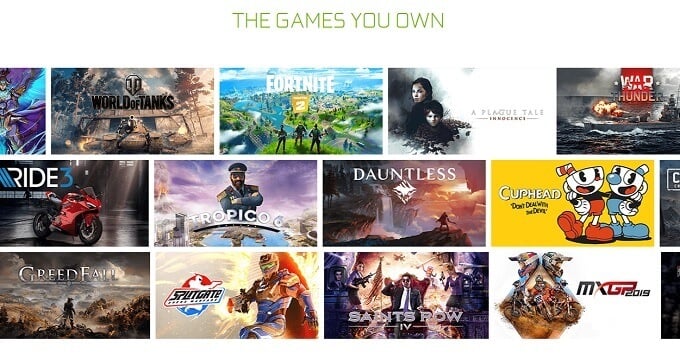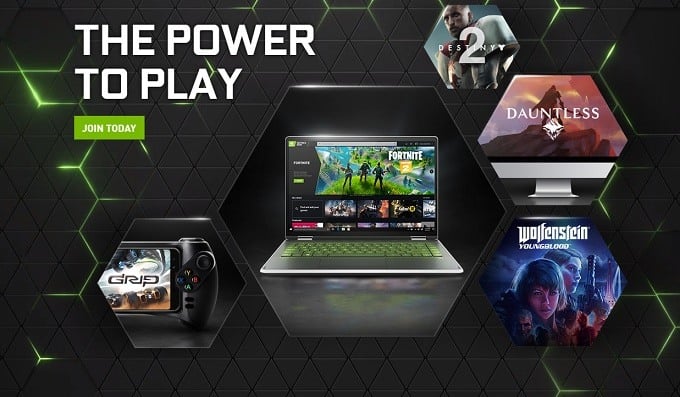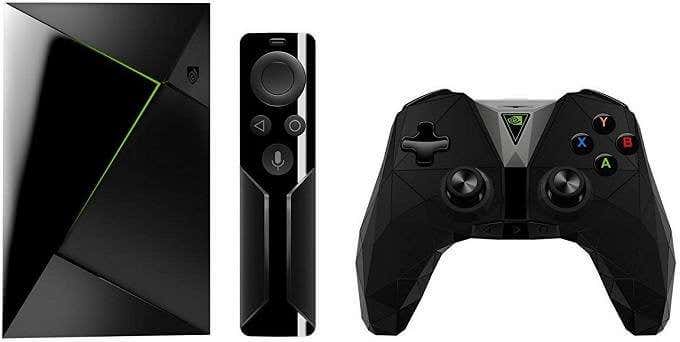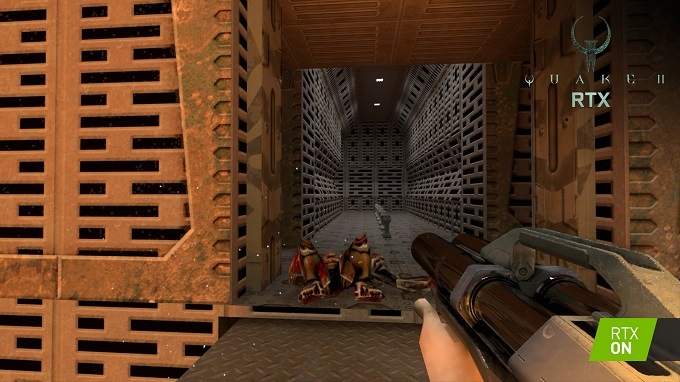Plus what makes it so special
With game streaming services like Microsoft xCloud and Google Stadia causing all sorts of buzz, it makes perfect sense for graphics giant Nvidia to put their own stupendous hardware to use as a shared gaming resource.
If you’ve been hearing about GeForce Now, that’s because the service is finally out of the beta phase and offers quite a few neat features you won’t find with the competition. So, what is GeForce Now and how does it work? You’ll know exactly what’s up by the end of this article!

What is Game Streaming?
The simplest way to understand game streaming is to compare it to media streaming, such as YouTube, Netflix and Amazon Prime Video. The movies don’t reside on optical or magnetic storage. Instead, when you hit that play button, a server somewhere in the world starts sending your device video data, which is then displayed to you as it arrives.
Game streaming works in a similar way, but has many special challenges to overcome. The video game runs on a computer somewhere in the world, which then sends you sound and images, while receiving input from your game controller, mouse and keyboard.
While video streaming can ensure smooth playback on any internet connection by using a “buffer” which stores up a few seconds or minutes of footage locally in case your connection fluctuates, video games are a real-time application where any sort of latency will make the experience unbearable.
So the game servers and internet connections have to be pretty high end to make it all viable. With broadband fiber internet becoming widespread and affordable, video game streaming is set to become more practical.
You can also now stream games on your local network. For example, here we’re streaming gameplay from a Playstation 4 to an iPad.
The concept is exactly the same for commercial streaming, it’s just that the source machine is nowhere near where you are.
What Makes GeForce Now So Special?
At first glance, there may not seem to be much difference between GeForce Now when compared to Google Stadia or Microsoft xCloud. Upon closer inspection, they couldn’t be any more different.
With Google Stadia, the product is pitched as a platform in its own right. Which means you buy games for Stadia, just as you would for PC or console. It’s also pitched as a very high-end 4K, 60 frames per second offering.
Microsoft’s xCloud, on the other hand, offers a cloud-based Xbox One S experience. Which is great because it gives you access to the existing Xbox One library. At the time of writing, xCloud is still a beta product with a limited set of games, but eventually it’s going to essentially offer what amounts to Xbox gameplay wherever you are, on just about any device. Presumably, when xCloud exits beta, you’ll have access to your existing library.

GeForce Now takes the idea of cloud-based PC gaming in a more literal way. You get access to a virtual PC of your own, where you can install games just as you would using a local PC. In other words, you’ll log into your GeForce Now account, install a client like Steam and install games to the system.
This is amazing for a few reasons. First of all, it means that you don’t have to rebuy games you already own on supported platforms. You can play your own games, as long as they’re on the list of supported titles. The other reason this is awesome, is that these platforms support cloud-syncing. So, for example, you can play a game on your GeForce Now virtual PC and then keep playing on your local gaming PC seamlessly.
GeForce Now Internet Connection Requirements
Making a service like GeForce Now work properly doesn’t just require some amazing data center technology. Your own internet connection has to be up to the task.

That means a connection of at least 15Mbps for 720/60fps performance and 25Mbps for 1080p/60fps performance. Total bandwidth isn’t all that matters either. Nvidia recommends that you use a fast router on the 5Ghz band, to reduce latency as much as possible.
Alternatively, you’ll have to connect your device to the router using a wired Ethernet connection. Mobile connections might have too much latency, depending on your location. And if you have a data cap, a service like this can eat it all very quickly.
What Platforms Can I Play On?
Nvidia supports a wide array of devices. Windows and Mac computers are both supported as are Android devices. If you’re someone who owns an Nvidia Shield device, you can play as well. At some point in the future Chrome OS support is coming as well.

Android devices need at least Android 5.0, with 2GB of RAM. Windows machines need a 2Ghz dual-core CPU with 4GB of RAM and anything equal or better to an Intel HD Graphics 2000 GPU. You should check the official page to make sure that your Mac is a supported one.
What Does it Cost?
At the time of writing, Nvidia has not released final long-term pricing for its service, but at launch there are two tiers available. The Free tier, obviously, doesn’t cost anything. However it does have some serious limitations. The most pertinent is the one-hour session limit.
After playing for an hour, you’ll be kicked out of your game. You can log right back in again, but you may find yourself at the back of the queue, behind other free players and paying players who get priority.
In terms of game performance however, Nvidia promises the same 1080p resolution and 60 frames per second smoothness for both free and paying users.

Speaking of the paying tier of users, the plan works out to $4.99 a month for the “Founders” tier of GeForce Now. This is special introductory pricing and locks you in for 12 months of the service. That means you’re committed to paying $60 in total.
Nvidia has softened the blow by also including a 3-month free trial of the paid service. So if it doesn’t work for you, there’s time to bail out. This means you get an effective 15 months of GeForce Now Founders for $60.
The paid tier comes with two major value propositions. The first is, as mentioned above, you get put ahead of free users in the queue. So while you may still have to wait to play, you won’t wait as long as they do. The second is the extension of session times up to six hours! The vast majority of players probably won’t log six hours of unbroken gameplay, so that seems more than reasonable.

The last notable perk for Founders users is the inclusion of RTX-enabled graphics hardware. This is Nvidia’s unique real-time “ray tracing” solution supported by a small number of PC games. These cards are quite expensive, so this offers an affordable way to experience what can be a very impressive rendering technique.
Before You Buy GeForce Now, Here are the Caveats
GeForce Now is an incredible offering and brings some properly new ideas to the cloud-based game streaming market. But before you get too excited, there are some things you should keep in mind.
First of all, using cloud-based resources like GeForce Now puts you in competition with other users who also want to play. Which means you’ll be put into a queue during peak times. Paying users get priority here as well, but even then they’re still competing with each other.

The most important other caveat comes from your specific internet connection. Even if your connection meets or exceeds the minimum requirements, things happen. If your connection fluctuates, or something happens to your service provider’s backbone, you can find yourself cut off from the GeForce Now service. At least owning your own local computer means that you always have exclusive access to it.
Carefully think about how reliable your connection has been in the past before. Of course, since there is a free option to try the service, you can test it yourself!
GeForce Now Could Be The One
Under the assumption that the technology and promised performance works as advertised, GeForce Now represents the most appealing of all game streaming services we’ve yet seen.
The ability to bring your existing game library to the service means instead of buying a new gaming PC, you can simply spend $5 a month plus your internet fees to experience the best of what PC gaming has to offer.
If it should come to pass that GeForce Now works with game subscription services such as Xbox Game Pass for PC, it could very well be a gaming match made in heaven.




